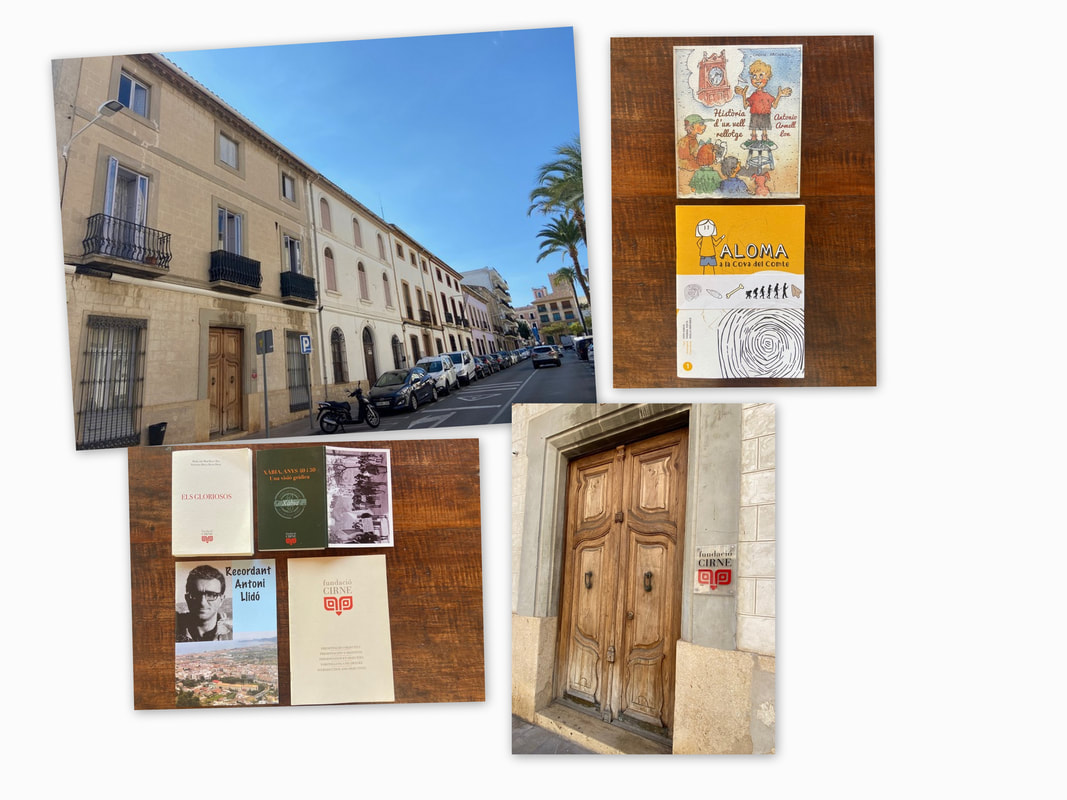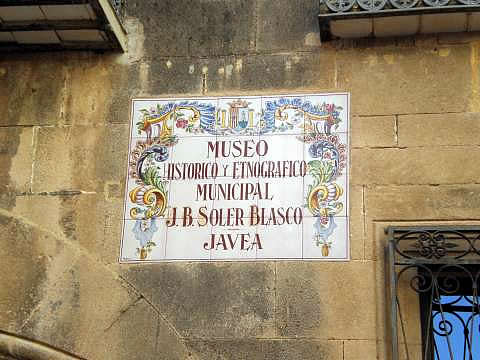|
31 members of AMUX and five of their friends visited Alicante on Sunday 14th November to take a guided tour of the special international exhibition “Etruscans – the dawn of Rome” at the MARQ museum. The tour, which was conducted in Castellano and English, was fascinating, although it was a bit rushed. Perhaps this was due to the Covid restrictions and the large number of visitors there who were keen to see the beautiful artefacts created by this mysterious and sophisticated Italian civilisation which thrived around the same time as the Iberians. Most of the exhibits had been provided by renowned Italian museums, but among them was a piece from our very own Soler Blasco Museu de Xàbia! This was an infundibulum found on the seafloor near Cap Prim.
Afterwards we went to visit the important archaeological site of the Iberio/Roman town of Lucentum situated on the Tossal de Manises. We were astonished to see this 5ha site hidden among the tower blocks of the city. Although we did not have a guided tour, there are many informative signs describing the streets, houses, towers, Roman baths and forum of this, the old Alicante. We then went to eat at “Il Fornello” restaurant. We had an adventure on the way. Our bus got stuck in a narrow street due to a badly parked car causing quite a traffic jam much to everyone’s amusement. Finally our driver squeezed through with much applause and AMUX enjoyed a delayed but magnificent meal beside the beautiful Playa de San Juan. See the slideshow below. Click on the right of the window to play each slide.
0 Comments
... A part from the Cultural Department of Xàbia and the Archaeological and Ethnological Museum, there is a third entity dedicated to the promotion of Xabia´s cultural heritage and the preservation of its patrimony ? This is the private Foundation of CIRNE, which was created in the early 2000s and is supervised by the culture-loving and generous Benimeli family, who are also its main donors. The foundation was initiated by Enric Martinez, who had married into the Benimeli family. He remains the driving force behind it. ( By the way, if you are wondering where the name CIRNE came from, it is Enric read backwards ! )
All in all, there are nine patrons of the CIRNE. Their aim is not only to preserve the heritage of Xabia´s past, but also to promote cultural, humanistic, scientific and environmental values. Hence they organise lectures, exhibitions and concerts of all kinds and regularly issue publications. They grant scholarships and provide funds for research and excavations. Furthermore, they have a library and an archive open to the public. Most notably this contains the historical documents of Antoni Llidó, a Xàbia-born priest who fought against social injustice and who met a tragic end in Chile during the Pinochet dictatorship. The historical documents of Soler Blasco, mayor and founder of the Museum, can also be found here. In fact, CIRNE´s next publication which is planned for the coming year, is a history of Xàbia´s Museum which was prepared by Soler Blasco himself but which he had never got round to publishing. The Foundation´s headquarters and exhibition center is in 18, Avenida d´Alacant, property of the Benimeli family. This house is one in a row of beautiful patriarchal houses from the 19th century, which, incidentally, had been destined to be replaced by apartment blocks, but due to the joint efforts of this family, the Museum and the Ayuntamiento, they have been catalogued and put under protection. |
ACTIVITIES
Categories |
- Home
- Blogs
-
Projectes
- Premio de Investigación - Formularios de Inscripción
-
Traducciones Translations
>
-
DISPLAY PANELS - GROUND FLOOR
>
- THE STONE AGES - PALAEOLITHIC, EPIPALAEOLITHIC AND NEOLITHIC
- CAVE PAINTINGS (ARTE RUPESTRE)
- CHALCOLITHIC (Copper) & BRONZE AGES
- THE IBERIAN CULTURE (THE IRON AGE)
- THE IBERIAN TREASURE OF XÀBIA
- THE ROMAN SETTLEMENTS OF XÀBIA
- THE ROMAN SITE AT PUNTA DE L'ARENAL
- THE MUNTANYAR NECROPOLIS
- ARCHITECTURAL DECORATIONS OF THE PUNTA DE L'ARENAL
- THE ATZÚBIA SITE
- THE MINYANA SMITHY
- Translations archive
- Quaderns: Versión castellana >
- Quaderns: English versions >
-
DISPLAY PANELS - GROUND FLOOR
>
- Catálogo de castillos regionales >
- Exposició - Castells Andalusins >
- Exposición - Castillos Andalusíes >
- Exhibition - Islamic castles >
- Sylvia A. Schofield - Libros donados
- Mejorar la entrada/improve the entrance >
-
Historia y enlaces
-
Historía de Xàbia
>
- Els papers de l'arxiu, Xàbia / los papeles del archivo
- La Cova del Barranc del Migdia
- El Vell Cementeri de Xàbia
- El Torpedinament del Vapor Germanine
- El Saladar i les Salines
- La Telegrafía y la Casa de Cable
- Pescadores de Xàbia
- La Caseta de Biot
- Castell de la Granadella
- La Guerra Civil / the Spanish civil war >
- History of Xàbia (English articles) >
- Charlas y excursiones / talks and excursions >
- Investigacions del museu - Museum investigations
- Enllaços
- Enlaces
- Links
-
Historía de Xàbia
>
- Social media
- Visitas virtuales
- Tenda Tienda Shop



 RSS Feed
RSS Feed
